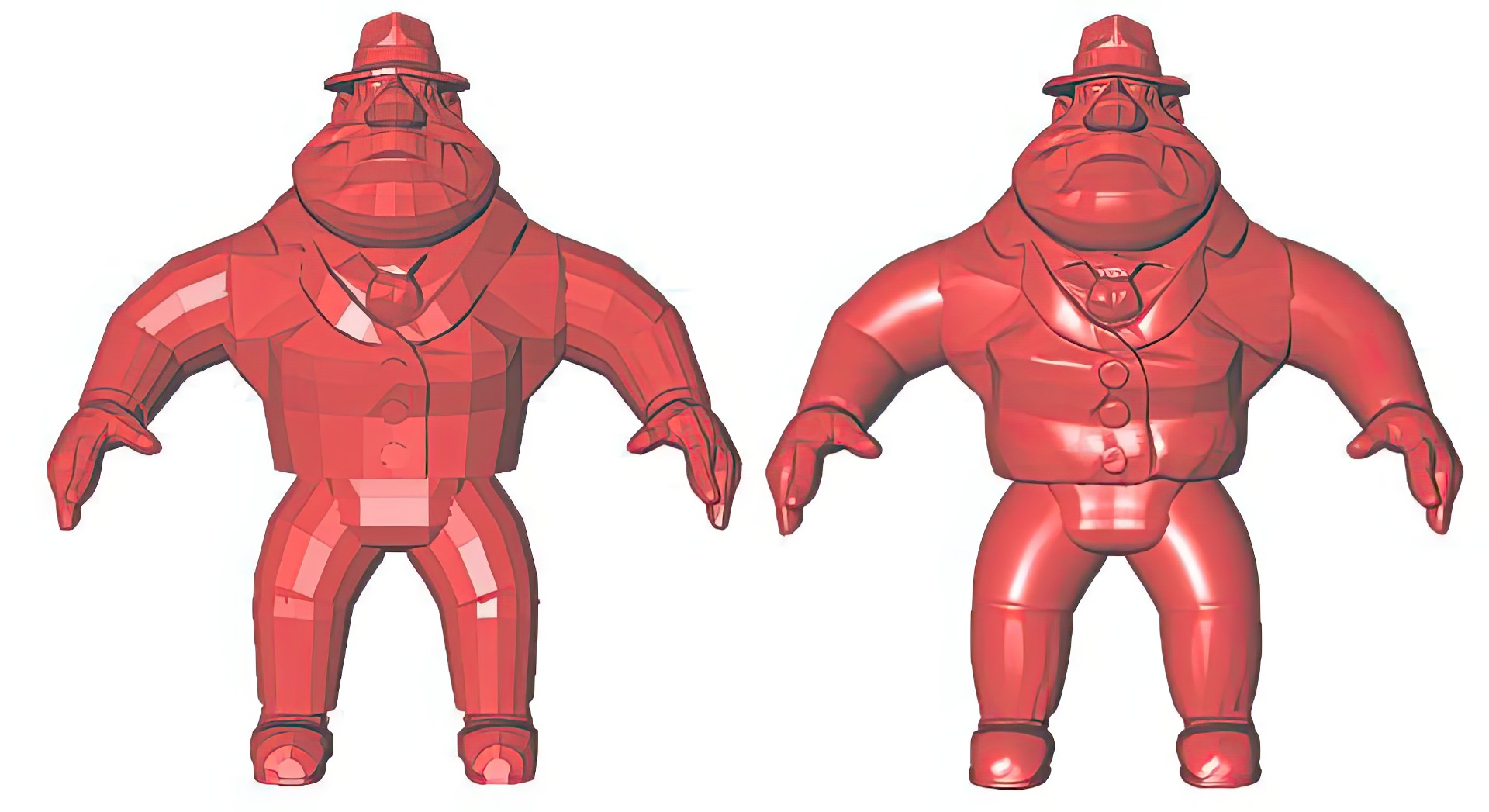“Deducing interpolating subdivision schemes from approximating subdivision schemes”
Conference:
Type(s):
Title:
- Deducing interpolating subdivision schemes from approximating subdivision schemes
Session/Category Title: Mesh processing
Presenter(s)/Author(s):
Abstract:
In this paper we describe a method for directly deducing new interpolating subdivision masks for meshes from corresponding approximating subdivision masks. The purpose is to avoid complex computation for producing interpolating subdivision masks on extraordinary vertices. The method can be applied to produce new interpolating subdivision schemes, solve some limitations in existing interpolating subdivision schemes and satisfy some application needs. As cases, in this paper a new interpolating subdivision scheme for polygonal meshes is produced by deducing from the Catmull-Clark subdivision scheme. It can directly operate on polygonal meshes, which solves the limitation of Kobbelt’s interpolating subdivision scheme. A new √3 interpolating subdivision scheme for triangle meshes and a new √2 interpolating subdivision scheme for quadrilateral meshes are also presented in the paper by deducing from √3 subdivision schemes and 4-8 subdivision schemes respectively. They both produce C1 continuous limit surfaces and avoid the blemish in the existing interpolating √3 and √2 subdivision masks where the weight coefficients on extraordinary vertices can not be described by formulation explicitly. In addition, by adding a parameter to control the transition from approximation to interpolation, they can produce surfaces intervening between approximating and interpolating which can be used to solve the “popping effect” problem when switching between meshes at different levels of resolution. They can also force surfaces to interpolate chosen vertices.
References:
1. Catmull, E., and Clark, J. 1978. Recursively generated b-spline surfaces on arbitrary topological meshes. Computer Aided Design 10, 6, 350–355.Google ScholarCross Ref
2. Claes, J., Beets, K., Reeth, F., Iones, A., and Krupkin, A. 2001. Turning the approximating catmull-clark subdivision scheme into a locally interpolating surface modeling tool. Proceeding of SMI 2001, 42–48. Google ScholarDigital Library
3. Doo, D., and Sabin, M. 1978. Behavior of recursive division surfaces near extraordinary points. Computer Aided Design 10, 6, 356–360.Google ScholarCross Ref
4. Dyn, N., and Levin, D. 1990. A butterfly subdivision scheme for surface interpolation with tension control. ACM Transactions on Graphics 9, 160–169. Google ScholarDigital Library
5. Halstead, M., Kass, M., and DeRose, T. 1993. Efficient, fair interpolating using catmull-clark surfaces. 35–44. (Proc. SIGGRAPH’93). Google Scholar
6. J. Stam. 1998. Exact evaluation of catmull-clark subdivision surfaces at arbitrary parameter values. Proceedings of SIGGRAPH 1998, 395–404. Google ScholarDigital Library
7. Kobbelt, L. 1996. Interpolatory subdivision on open quadrilateral nets with arbitrary topology. Computer Graphics Forum 15, 3, 409–410. (Proc. EUROGRAPHICS’96).Google ScholarCross Ref
8. Kobbelt, L. 2000. √3 subdivision. 103–112. (Computer Graphics Proceedings, SIGGRAPH’00). Google Scholar
9. Labsik, U., and Greiner, G. 2000. Interpolatory √3 subdivision. Computer Graphics Forum 19, 3, 131–138. (Proc. Eurographics’00).Google ScholarCross Ref
10. Li, G., and Ma, W. 2007. A method for constructing interpolatory subdivisions and blending subdivisions. Computer Graphics Forum 26, 2, 185–201.Google ScholarCross Ref
11. Li, G., Ma, W., and H. Bao. 2004. Interpolatory √2 subdivision. In proceeding of Geometric Modeling and Processing 2004, 185–194. Google Scholar
12. Lin, S., and Luo, X. 2007. A unified √3 interpolatory and approximation subdivision scheme. Eurographics 07. Short paper, In Eurographics Digital Library.Google Scholar
13. Loop, C. 1987. Smooth subdivision surfaces based on triangles. Master’s thesis, University of Utah.Google Scholar
14. Loop, C. 2002. Bounded curvature triangle mesh subdivision with the convex hull property. The Visual Computer 18, 5–6, 316C325.Google ScholarCross Ref
15. Maillot, J., and Stam, J. 2001. A unified subdivision scheme for polygonal modeling. Computer Graphics Forum 20, 3, 471–479. (Proc. Eurographics’01).Google ScholarCross Ref
16. Nasri, A. 1987. Polyhedral subdivision methods for free-form surfaces. ACM Trans Graph 6, 1, 29–73. Google ScholarDigital Library
17. Reif, U. 1995. A unified approach to subdivision algorithms near extraordinary vertices. Computer Aided Geometry Design 12, 153–174. Google ScholarDigital Library
18. Velho, L., and Zorin, D. 2000. 4–8 subdivision. Computer Aided Geometric Design 18, 5, 397–427. Google ScholarDigital Library
19. Zorin, D., Schroder, P., and Sweldens, W. 1996. Interpolating subdivision for meshes with arbitrary topology. Computer Graphics 30, 189–192. (Proc. SIGGRAPH’96). Google Scholar
20. Zorin, D. 1997. c
k continuity of subdivision surfaces. Thesis, California Institute of Technology.Google Scholar
21. Zorin, D. 2000. Smoothness of stationary subdivision on irregular meshes. Constructive Approximation 16, 3, 359–397.Google ScholarCross Ref





